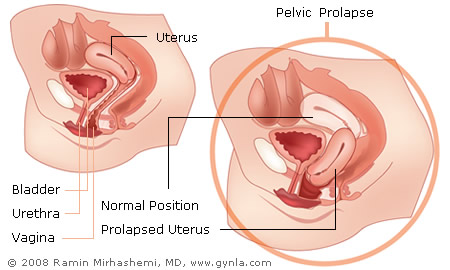da Vinci Sacrocolpopexy for vaginal or uterine prolapse.
Vaginal or uterine prolapse is a very common condition that occurs with age. Some risk factors associated with this condition include:
- Multiple child birth
- Prolonged labor
- Large babies delivered via the vaginal route
- Connective tissue diseases, such as lupus
Prolapse occurs when the connective tissues or muscles within the body cavity are weak and unable to hold the pelvis in its natural orientation. There are varying degrees of pelvic prolapse in women. They can range from mild prolapse, which presents as some pelvic pressure and discomfort, to complete prolapse (also termed “complete procidentia”), where the uterus, bladder, vagina, and rectum are all prolapsed out of the vagina.

Patient recovery is 1 week with 4 small incisions that are barely visible. The procedure is also less painful.

In the United States, over 130,000 surgical procedures are done annually for pelvic prolapse. Abdominal sacrocolpopexy is a surgical procedure that links the prolapsed vagina to the sacrum via an artificial tissue material called a “mesh”. This procedure has traditionally and continues to be done through a cut in the abdomen that measures 15 to 30 cms. Dr. Mirhashemi has developed techniques to perform this surgery through robotic laparoscopic techniques. As with any robotic surgery, the procedure is more accurate and less invasive. Patient recovery is 1 week with 4 small incisions that are barely visible. The procedure is also less painful.

For most women, da Vinci Sacrocolpopexy offers numerous potential benefits over a traditional open approach:
- Significantly less pain
- Less blood loss and need for transfusions
- Less risk of infection
- Less scarring
- Shorter hospital stay
- Shorter recovery time
- Quicker return to normal activities







